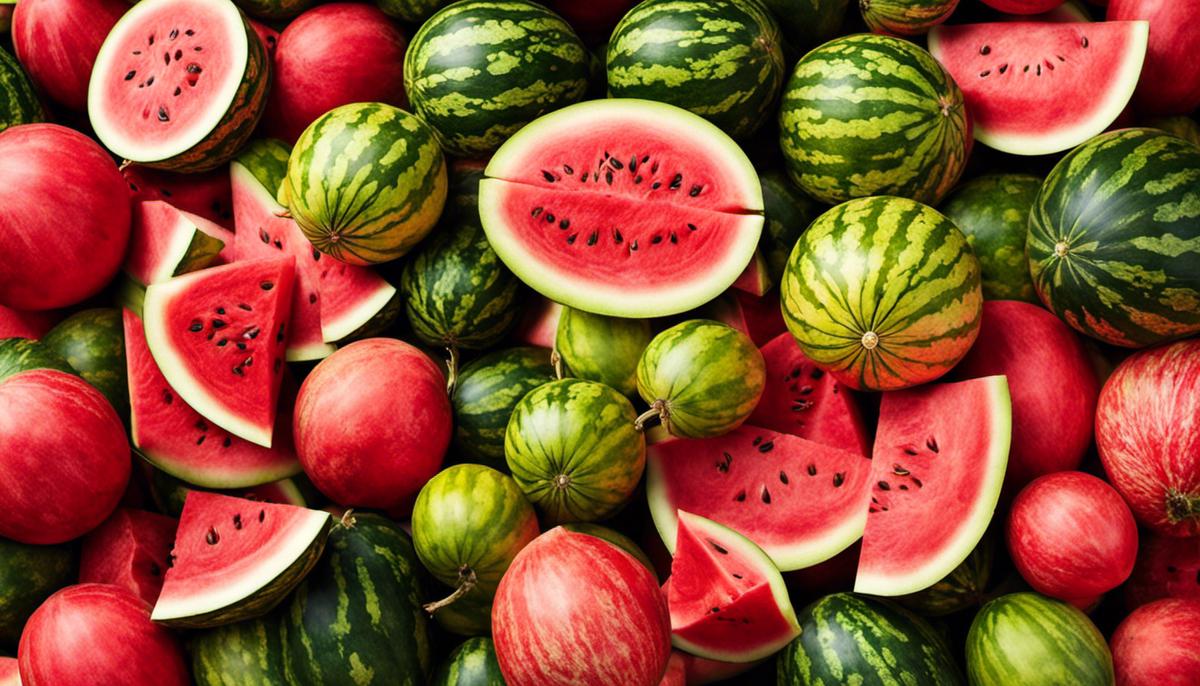

Agridisk
Egypt - Alexandria
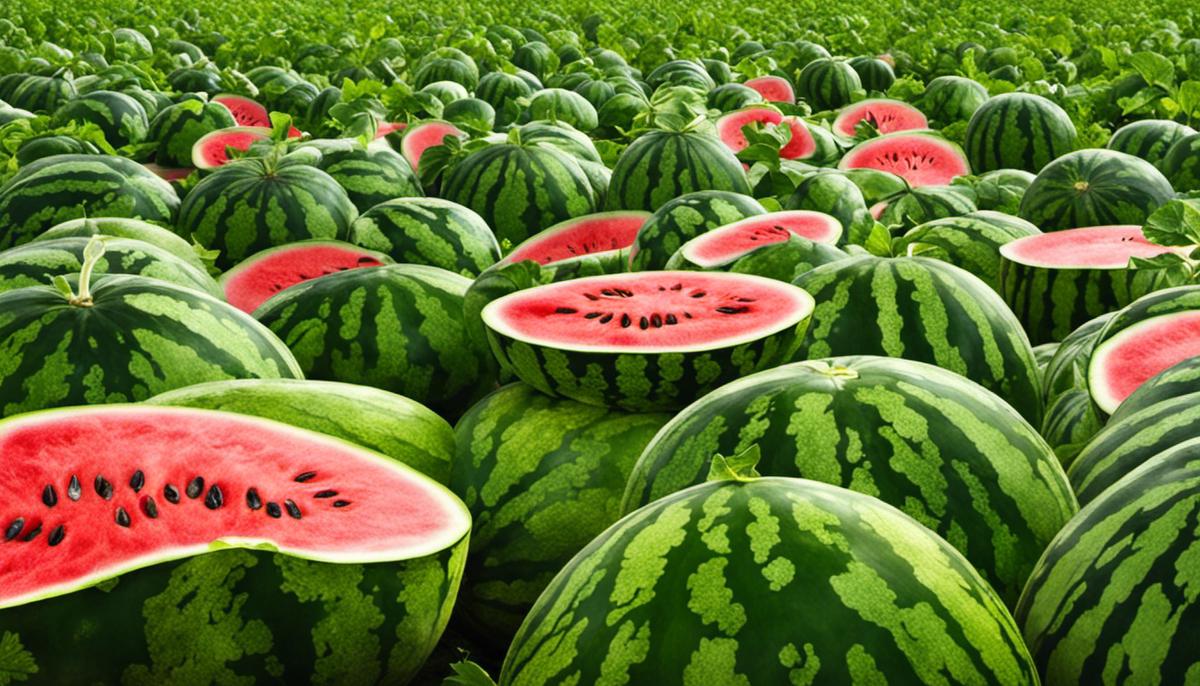
Grow Watermelons In Quantities For Profit Step By Step
Description: Watermelon cultivation is one of the best profitable crops from which you can achieve a large return, if it is cultivated correctly and on an expandable basis. Commercial farms start producing the crop through seeds in a protected and internally controlled environment, and we wait for the growth of small seedlings and they are ready for transportation and planting. Note: The watermelon plant is considered one of the plants that originate in Africa, and it loves heat, and it may die in low temperatures, so the soil temperature should not be less than 18 degrees Celsius. Entering the profitable market of watermelon cultivation? The key lies in smart, sustainable, and calculated steps. A well-planned approach will provide ample opportunities for profit, while also benefiting the environment. In this examination of watermelon cultivation, we discuss market analysis, costs and profitability assessments, innovative farming practices, marketing and sales strategies, as well as environmental considerations. By combining market trends, innovative farming practices, and effective branding, tacit profit-making methodologies can be discovered and capitalized on. Moreover, incorporating sustainable farming practices infuse a touch of environmental stewardship which has become an imperative in modern agricultural ventures. This analysis will enlighten you on grasping consumer needs, deploying modern farming technologies, building an effective brand presence, and much more. In the rapidly-evolving and hyper-competitive world of the produce industry, there's an unexpected heavyweight climbing through the ranks: watermelons. Blessed with an inherently hydrating composition, a unique taste profile, and a wealth of health benefits, watermelons are swiftly asserting themselves as a key player in the global fruit industry. Yet, does the market recognize and capitalize on this fact? Are consumer behaviors and trends veering towards this sweet, juicy melon? Let’s delve into these questions and explore the untapped potential. Recording an impressive billion-dollar turnover annually, the watermelon industry shows no signs of slowing down. The global watermelon market was valued at $7.3 billion in 2018 and is projected to reach $9.06 billion by 2026, growing at a CAGR of 2.6% from 2019 to 2026 according to Allied Market Research. But do these figures truly encapsulate the potential? Scratch the surface, and they only signify the beginning of a much bigger narrative. Driving these numbers are two cruxes – ascending consumer health consciousness and the advent of value-added watermelon products. More consumers now than ever before are cognizant of their dietary choices. This nutrition-savvy cohort, in pursuit of better health, seem to flock towards watermelons due to their high nutrient content and fairly low calorie count. They offer an excellent source of hydration, brims with vitamins A and C, lycopene, and antioxidants, making them a clear favorite among health enthusiasts and general consumers alike. On the other hand, innovative value-added products are paving their way into market shelves, leveraging the soaring popularity of watermelons. Be it watermelon-flavored ice creams, mixing it with salad, pairing with feta cheese, or even watermelon-inspired beverages and infused water – the possibilities are limitless and brimming with potential. It's an important development to watch, as it expands the consumption patterns of a traditional, seasonal fruit into more diverse and year-round possibilities, thereby creating an extended window of market opportunities. Geographically, it's worth noting that China, followed by Turkey, Iran, Brazil, and the United States are the top producers. However, thanks to enhanced distribution and logistics mechanisms in place, the consumption of watermelons no longer remains confined to these belts. The global consumer base is expanding, signaling a trend that savvy businesses should heed. Furthermore, market research firm Mintel indicates a notable shift in consumer behavior towards novelty and unique flavor experiences. With watermelons being pliable to a gamut of culinary experiments, the potential here to satisfy adventurous palates is unprecedented. This provides a grand space for product differentiation, customizability, and personalization – the gravitational points to draw in modern consumers. All these factors coalesce to depict an attractive, intriguing image of the future of the watermelon industry. The fusion of its inherent goodness and innovative uses makes watermelons a powerhouse packed with possibilities. The path seems illuminated for those who recognize this potential, situated perfectly at the cusp of health consciousness and culinary innovation. Is this an opportunity in disguise? Well, the answer echoes loud and clear – it's time to turn these sweet slices into a lucrative endeavor! Diving right in, let's tackle the financial implications tied to watermelon cultivation, making sure to move beyond the raw fruit's market size and its globally expanding consumer base already discussed. Watermelon cultivation revolves around an intricate nexus of cropping costs, yields, and market prices – components that scream potential but can prove testing for an entrepreneurial venture. A prime determinant of viability, production costs, are contingent on variety and farming technique. Cultivation of seedless watermelons, lionized by trend-focused consumers, is relatively costlier due to the necessity of transplanting, yet yields superior returns. Pair seedless cultivation with organic farming techniques and you get a marketable product appealable both to the health-conscious and environmentally woke consumers. This merging of niche markets could be a valuable vehicle to foster premium pricing, thereby optimizing revenue. Focus on technological adoption in cultivation methodology must not be ignored, as it tends to increase efficiency and decrease post-harvest losses. Digital farming tools like predictive analytics and drone technology, though initially expensive, are potent sources of long-term cost reduction. Another salient factor impacting financial prospects is the stability and predictability of yields. Weather conditions, infestation, and diseases directly impact yield and consequently, revenue. This is where crop insurance enters. Although an added cost, it mitigates the risk associated with potential yield loss. Turning focus onto market prices, keen understanding of market forces is elemental. Seasonality often affects watermelon prices - lower in peak summer harvesting months; higher in offseason. Hence, adopting off-season cultivation can drive significant gain. Yet, this requires substantial initial investment in infrastructure and technology - greenhouses or high tunnels. Further, the rise in value-added watermelon products opens avenues for circumventing market fluctuations, adding stability and predictability to the revenue stream. By-products like juice, snacks, oil and even watermelon seed flour cater to shifting consumer behavior, establishing an almost perennial demand. Lastly, bolstering financial prospects are strategic distribution networks. Establishing connections with supermarkets, restaurants, and processed food businesses augments market accessibility and creates a more consistent demand. In conclusion, watermelon cultivation, while thriving in consumer appeal and being bolstered by the rise of value-added products, has several financial dimensions that need keen scrutiny and strategic management. At its core, watermelon cultivation is a robust venture with the potential for high ROI provided the synchronization of informed market strategies, adoption of innovation, and effective risk management. As in any entrepreneurial endeavor, the key to unlock its full financial potential lies in optimizing every facet of the value chain, from production right up to market delivery. Remember, every piece of the puzzle adds value to the grand vision – that optimal, profitable, and sustainable cultivation of watermelon! As the watermelon industry vaults towards new horizons, the time is ripe to delve deeper into the innovative practices that can enhance both productivity and profitability. A glance beyond the surface reveals a plethora of untapped opportunities and potential strategies that await implementation. Technology's foray into agriculture has been transformative, and the watermelon industry can leverage this in manifold ways. Precision farming harnesses data-driven analytics and automation to optimize resource usage, reduce waste and increase yield. This involves the deployment of cutting-edge technologies such as GPS, remote sensing and IoT (Internet of Things). Drones, for instance, can be employed for real-time monitoring of crop health and irrigation systems. This not only augments efficiency but also slashes exorbitant overhead costs. Speaking of irrigation, consider the groundbreaking potential of drip irrigation. It is a water-efficient technique that supplies water directly to the plant roots, drastically conserving water and fertilizer, and consequently, capital. This approach also mitigates the prevalence of water-borne diseases and pests. Inline with the aforementioned strategy, hydroponics – the cultivation of plants in water without soil, could significantly expedite growth cycles and bolster yields. This method also permits year-round production, neutralizing seasonal influences. Investing in novel and disease-resistant varieties of watermelon seeds can stimulate profitability. This includes hybrid seeds tailored to adapt to specific weather patterns, soil types, and pests, thus consolidating predictability of yields. The burgeoning demand for healthy alternatives channels attention towards organic farming. Organic watermelons can comand premium prices owing to their high nutrient content and absence of harmful pesticides or artificial enhancers. Investigating deeper into the market scenario, value addition doesn't merely lie in innovative products, but also in services. Exploring direct-to-consumer sales, for instance, could be a gamechanger. By bypassing the traditional supply chain interferences, farmers can glean more profits, retain control over pricing, and enhance quality assurance. This can be accomplished through farmer markets, community-supported agriculture (CSA), or digital platforms. In light of the eco-conscious trend gripping consumers today, sustainable packaging could be a defining edge. Utilizing bio-based, compostable or recyclable materials for packaging can act as a selling point, amplifying the brand's identity and market appeal. Innovations in cold chain logistics can further minimize post-harvest losses, preserve freshness and extend shelf-life. These include advanced refrigeration techniques, controlled atmosphere storage, and high-tech transport systems. While these innovative practices herald an optimistic future for watermelon farming, their successful implementation hinges on thorough research, strategic planning, and risk assessment. Steering clear of a one-size-fits-all approach, it's crucial to shape strategies in harmony with the business's unique capabilities and market dynamics. As we usher in a new era of farming, the pioneer will be the one who embraces these transformative practices with dexterity and vision. The integration of innovation and investment in the industry is vital for capturing new markets and strengthening existing ones. Let's delve into the potential of precision farming technology. This technology allows for precise and controlled management of watermelon farms, leading to enhanced productivity and product quality. The star player here could be the Internet of Things technology. The IoT sensors monitor key factors like soil quality, weather conditions, and water needs, leading to a well-managed and predictable yield. A predictable yield in the business means stable financial prospects. Now, consider the practice of drip irrigation and hydroponics. They are not merely latest trends, but smart investments. Drip irrigation maximizes water utilization, consequently reducing overhead costs. Hydroponics, on the other hand, allows off-season cultivation regardless of climatic conditions, thereby gaining an advantage over traditional growing methods. Investing in novel, disease-resistant watermelon seeds may seem daunting, but it's a gamechanger. Non-genetically modified seeds have flown under the market radar but they promise a higher profit margin. Especially, the seedless and mini watermelons bring a fresh wave of novelty to consumers. Organic farming capitalizes on the rising health consciousness among consumers. In a market flooded with chemically grown produce, standing out with organic watermelons not only takes advantage of the willing-to-pay-more-for-the-organic consumer segment but also paves the way towards sustainability. Traditional supply chains might be familiar, but direct-to-consumer sales are disrupting the business scene. Bypassing middlemen, farms can deal directly with consumers, yielding a higher profit margin. This method also blends well with the fresh and healthy image that watermelon sellers want to project. Sustainable packaging is more than just a green initiative. By embracing packaging made from renewable and biodegradable materials, you can appeal to environmentally conscious customers - a rapidly growing segment. As for cold-chain logistics, it's key to maintaining the quality of the watermelons from the farm to the consumer. Investments in this area can substantially minimize post-harvest losses and maintain the freshness of watermelons, thereby guaranteeing customer satisfaction. In conclusion, it is imperative to remember that all the above-mentioned practices should be underpinned by thorough research, strategic planning and careful risk assessment. There is no one-size-fits-all approach to selling watermelons. In a market characterized by heavy competition, understanding the unique needs of your target customers and aligning your business strategies to meet these needs can drive sustained success. With a strategic approach, the billion-dollar watermelon industry holds immense potential for growth. Be prepared to innovate and adapt to seize these opportunities. Beyond cultivating juicy, ripe melons, the future of profitable watermelon production is increasingly linked to innovative, environmentally mindful practices which can significantly impact the bottom line. This extends industry potential far beyond delicious summer treats and into a perennial, productive enterprise. Staying relevant in this competitive market isn't simply about growing the juiciest melons anymore, it's about anticipating and meeting growing consumer demand for sustainability. With climate change concerns top of mind for consumers across the globe, sustainable farming practices have become more than an option - they are an urgent requirement. The watermelon industry has a ripe opportunity to lead by example through productive, conscious farming techniques that do less harm to our planet. Precision farming technology steps prominently onto this stage. The use of IoT sensors in watermelon farming has transformed conventional methods into smart farming practices. Predictive analytics and real-time data harvesting have enabled watermelon producers to maximize yield, reduce waste, save water, and most importantly, minimize the environmental footprint, thus ensuring not just healthy profits but a healthier planet. To further boost sustainable production and profits, the watermelon industry is investing in smart water management systems like drip irrigation and hydroponics. These systems consume significantly less water and, in turn, reduce the strain on our planet's dramatically depleting water resources. Additionally, it improves production, leading to a substantial increase in revenue. That's not all. Embracing novel seed technology, particularly disease-resistant variants, presents another promising route to profitability and sustainability. Disease-resistant seeds result in healthier, more robust harvests and reduce the reliance on chemical pesticides, presenting the dual benefits of higher profitability and environmental protection. The rising trend of conscious consumerism further underscores the importance of organic farming. Consumers are increasingly investing in products that benefit their health and the environment. Capitalizing on this growing health consciousness, organic watermelon production opens the gateways to the potentially lucrative markets of eco-aware and health-driven consumers. Innovative distribution models are also emerging as a savvy business choice. Direct-to-consumer sales allow producers to bypass traditional supply chains and forge a direct relationship with their customer base. This not only reduces carbon footprint but also creates more opportunities for engagement and customized marketing, thus translating into increased profits. Choice of packaging also is an influencing factor with sustainable packaging becoming both an environmental and market necessity. Embracing biodegradable packaging options or employing reusable, recyclable solutions appeal to the environmentally conscious customers and opens up further opportunities for differentiation in the marketplace. Equally crucial is the innovation in cold chain logistics, ensuring the quality of watermelons from farm to table. Enhanced logistics and technology enable efficient delivery while reducing spoilage and waste, all while keeping environmental impact at a minimum. The future, thus, beckons watermelon producers to align with these shifting paradigms. Digitalization and targeted development of eco-friendly practices, coupled with thorough research, strategic planning, and careful risk assessment can translate into a robust market offering that is profitable, desirable, and sustainable. In the oasis of flavors, watermelon producers who understand and align with customer needs and environmental sustainability are more likely to stand out in the market. The watermelon industry, propelled by these drivers, presents the potential for growth and underscores the importance of constant innovation and adaptation. By integrating market dynamics, technology-driven farming practices, effective marketing strategies, financial prudence, and empathetic environmental considerations, watermelon farming can indeed be transformed into a lucrative and gratifying business. The purpose is not only to reap the optimal proceeds but to simultaneously contribute to ecological conservation. As the world of watermelon cultivation unfolds, aligning it with technological advancements and sustainable practices will define the successful farmers of tomorrow. Therefore, watermelon cultivation can serve as the perfect stage to showcase how understanding the numerous dimensions of agriculture can generate prosperity while preserving the planet.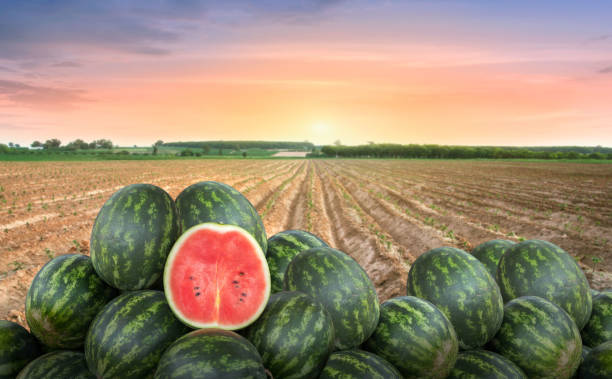
Steps required to grow watermelon
Market Analysis
Unearthing the Untapped Potential: A Deep Dive into the Market Trends and Customer Demand for Watermelons.
Cost and Profitability Assessments

Innovative Farming Practices
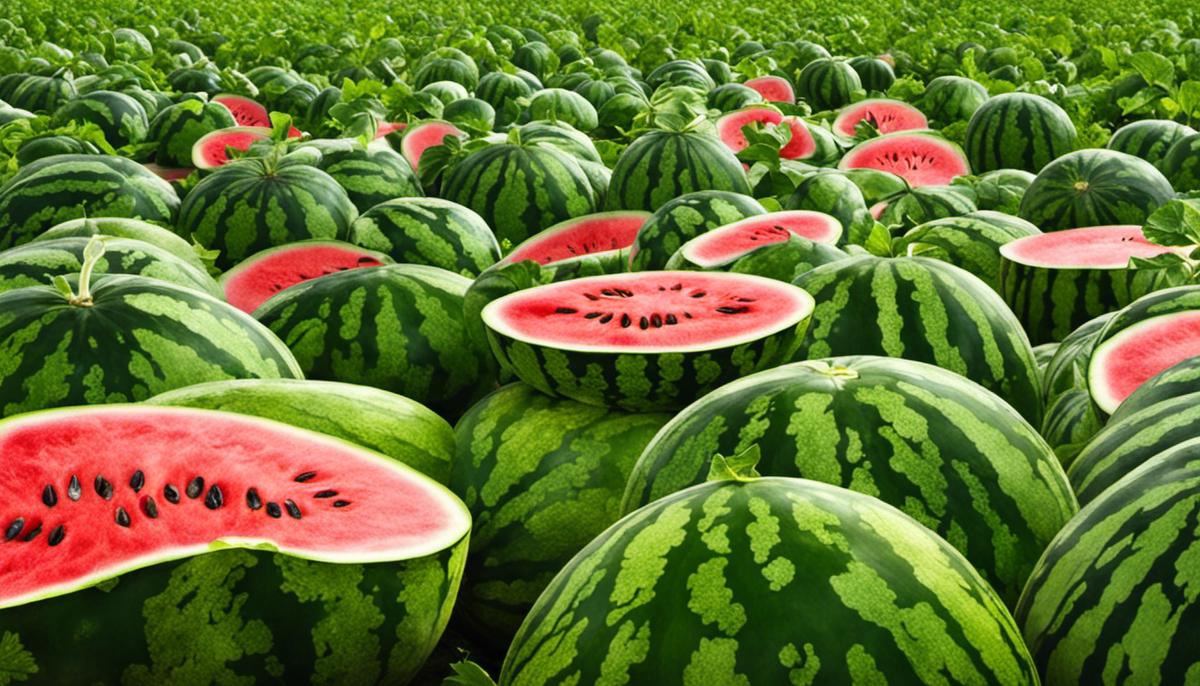
Marketing and Sales Strategies
With the background and potential of the watermelon industry presented, the focus now is on marketing and selling strategies to maximize profits.
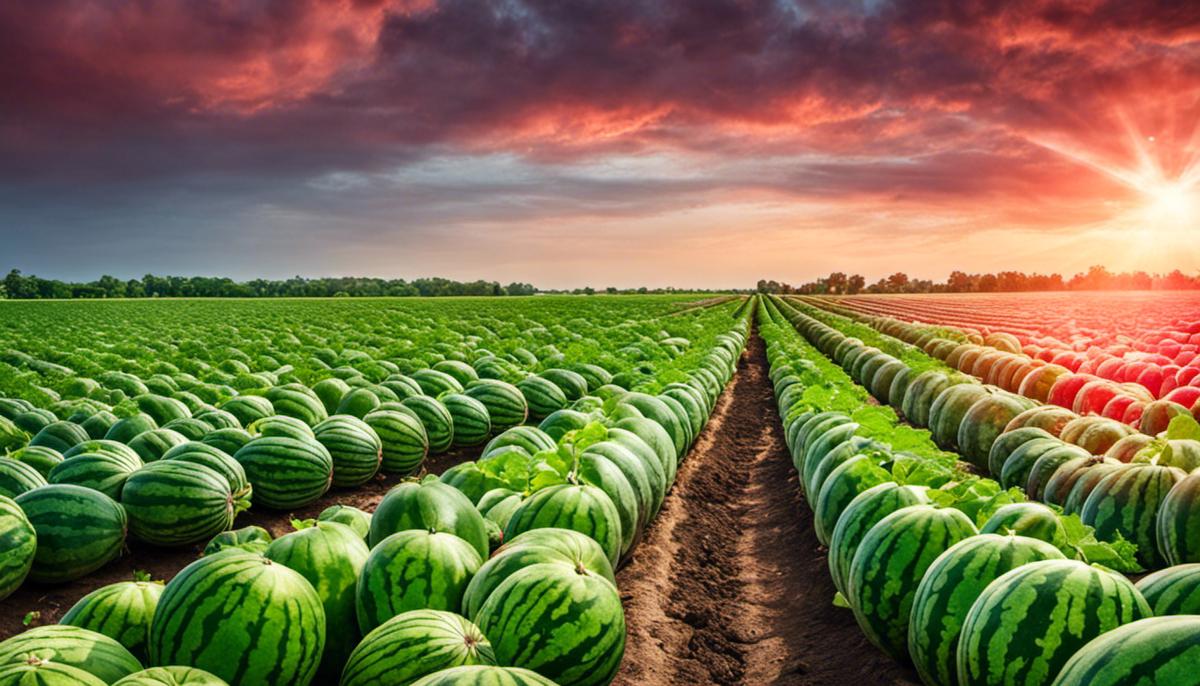
Sustainability and Environmental Considerations
